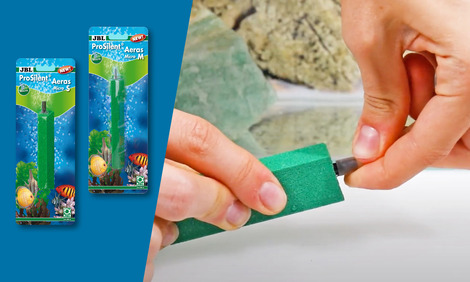Aquarium and pond inhabitants need oxygen to live. Air stones, also called diffusers, transport air from a diaphragm pump (air pump) into the aquarium or pond. The air bubbles from the air stone into the water to the water surface. The air bubbles release oxygen to the surrounding aquarium and pond water on their way to the surface and also move the water surface. The water surface becomes larger due to the movement and can absorb more oxygen from the air.
Would you like to buy a spherical diffuser stone / air stone or are you looking for additional information? Then take a look at our product page: JBL ProSilent Aeras Micro Ball L .
Find out more about diaphragm pumps and aeration in the Themeworld Aquarium Air pumps and in the Themeworld Pond Oxygen and temperature .
